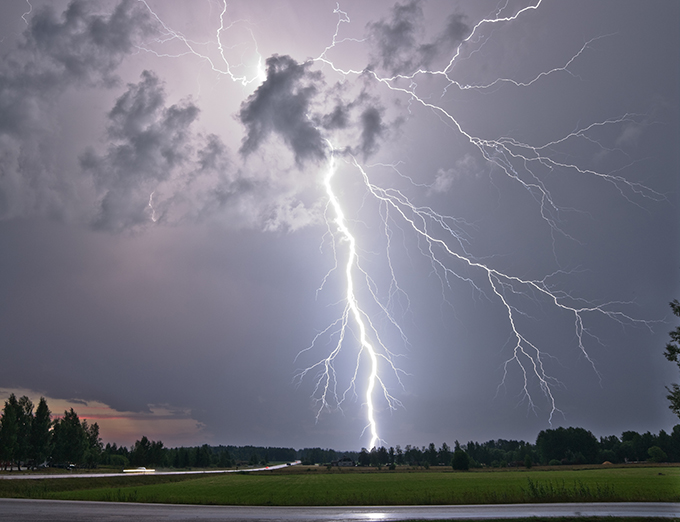Staying Safe During Thunderstorms
April 5, 2023
When the weather forecast calls for inclement weather, remember that when thunder roars, go indoors. The CDC offers tips on staying safe during these storms, because being outside when lightning is present is not something to take likely — ever.
- If the weather forecast calls for thunderstorms, postpone your trip or activity
- If you are caught in an open area, act quickly to find adequate shelter. The most important action is to remove yourself from danger. Crouching or getting low to the ground can reduce your chances of being struck but does not remove you from danger. If you are caught outside with no safe shelter nearby, the following actions may reduce your risk:
- Immediately get off elevated areas such as hills, mountain ridges, or peaks
- Never lie flat on the ground. Crouch down in a ball-like position with your head tucked and hands over your ears so that you are down low with minimal contact with the ground
- Never shelter under an isolated tree
- Never use a cliff or rocky overhang for shelter
- Immediately get out of and away from ponds, lakes, and other bodies of water
- Stay away from objects that conduct electricity (such as barbed wire fences, power lines, or windmills)
- If you are in a group during a thunderstorm, separate from each other. This will reduce the number of injuries if lightning strikes the ground
- If you are out in the open water and a storm rolls in, return to shore immediately
- Avoid open vehicles such as convertibles, motorcycles, and golf carts
- Avoid open structures such as porches, gazebos, baseball dugouts, and sports arenas. These structures won’t protect you from lightning
- Stay away from open spaces such as golf courses, parks, playgrounds, ponds, lakes, swimming pools, and beaches. Seek shelter immediately
- Stay away from tall structures, such as telephone poles and trees; lightning tends to strike the tallest object around
Being indoors does not automatically protect you from lightning. In fact, about one-third of lightning-strike injuries occur indoors. Here are some tips to keep safe and reduce your risk of being struck by lightning while indoors:
- Avoid contact with water during a thunderstorm. Do not bathe, shower, wash dishes, or have any other contact with water during a thunderstorm. Lightning can travel through plumbing
- Avoid using electronic equipment of all types. Do not use anything connected to an electrical outlet, such as computers, laptops, game systems, washers, dryers, or stoves. Lightning can travel through electrical systems and radio and television reception systems
- Avoid using corded phones. Corded phones are not safe to use during a thunderstorm. However, cordless or cellular phones are safe to use during a storm
- Do not lie on concrete floors or lean on concrete walls during a thunderstorm. Lightning can travel through any metal wires or bars in concrete walls or flooring
Credit: CDC
HazTek Inc. is a leading provider of comprehensive safety management services with a mission to enrich the health, safety, and well-being of our employees, our customers, and our communities.
